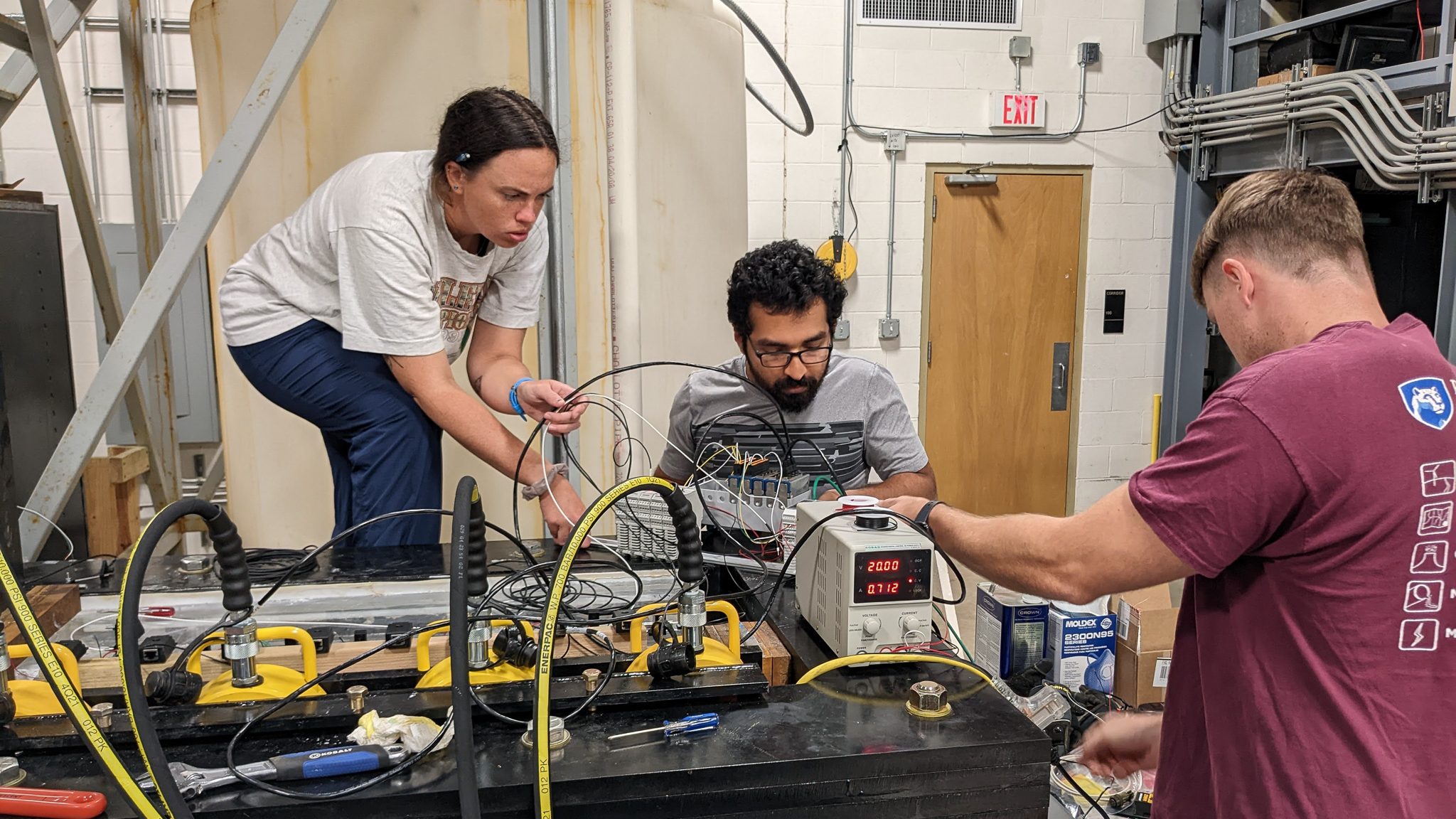Making Quakes in Austin, Texas
November 11, 2022
Newly Constructed Earthquake Machine Makes Earthquake on First Test

By Kristin Phillips
After months spent carefully combining black steel plates, delicate sensors, and five hydraulic jacks into a device that mimics the sliding of tectonic plates past each other, a team of researchers and graduate students successfully made an earthquake in the lab on November 7, 2022.
It was an audible snap.
“Today was our first experiment, and—with nothing broken or catching fire—we were able to simulate an earthquake,” said Srisharan Shreedharan, a postdoctoral fellow at the University of Texas Institute for Geophysics (UTIG). “We can now establish a baseline of what’s working or not working for our upcoming experiments.”
The experimental apparatus, known as the Earthquake Machine, was designed at UTIG and constructed in a cavernous warehouse next door. Assembled on an industrial metal table among stacked equipment from decades of research projects, the device includes a line of four hydraulic jacks that simulate the normal pressure or load between the plates, which in this case are two blocks of acrylic plastic. It is a fifth jack that piles sheer stress onto the system, moving the acrylic ‘tectonic plates’ past each other, millimeter by millimeter.
Earthquakes occur along the fault line — a quartz powder-filled gap between the acrylic blocks — when the pressure becomes too great. Sensors record each earthquake including how far the fault slips, the amount of shear stress on the fault, change in volume within the fault during the quake, and seismic radiation.
The earthquakes the machine produces are audible but tiny compared to real world tremors. Nonetheless, producing them in a controlled environment will give researchers invaluable information about the conditions that cause strong earthquakes and possible precursors warning of an impending quake.
“This experimental data can then be compared to our models as well as to real-world data from subduction zones and other fault zones like the San Andreas fault,” said David “Chas” Bolton, a research scientist at the Bureau of Economic Geology, who will soon take Shreedharan’s place leading the experiment. “We now intend to investigate how ruptures start and propagate along bimaterial fault zones.”
The UT Earthquake Machine is a large-format direct shear experiment, designed and built at UTIG to recreate laboratory earthquakes in real time. It’s the latest of many specialized lab facilities for studying earthquakes at UT GeoMechanics and GeoFluids, a research lab based at UTIG and the Department of Geological Sciences. UTIG, the department and the bureau are research units of the Jackson School of Geosciences.
This story was originally posted by the Department of Geological Sciences.